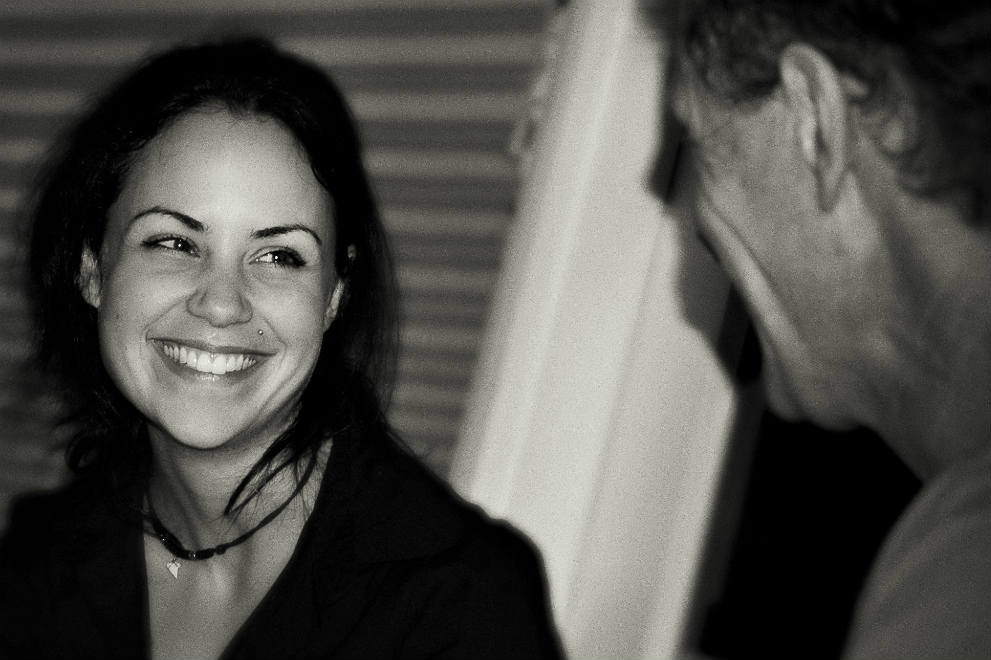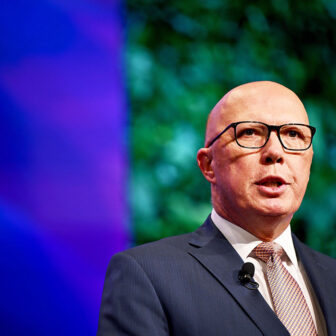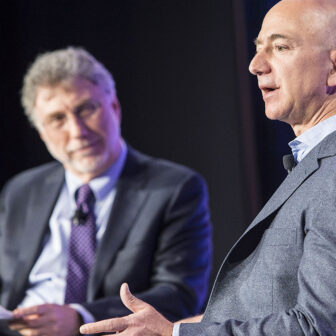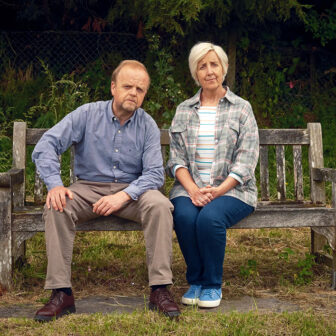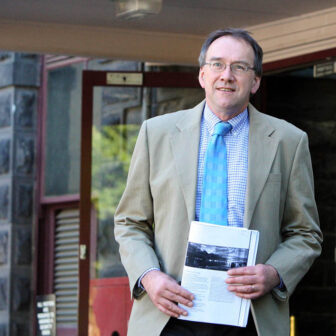This year, for the first time, a podcast has won a prestigious Walkley award for Australian journalism. Bowraville, by reporter Dan Box and producer Eric George of the Australian, is a serialised investigation of a real, unsolved crime, the alleged murders of three Indigenous children in a small New South Wales town. Conceived as a newsroom experiment and released in May, it become a surprise hit, not only in Australia but also internationally.
Bowraville seems to have heralded a golden era of serialised Australian true-crime podcasting. Following its success, recent months have seen the release of three more exemplars of the form: Phoebe’s Fall, Searching for Rachel Antonio and Ballarat’s Children. True-crime podcasting is now among the most popular long-form content available worldwide, and these Australian podcasts are up there with the best of them. All of them show how this new medium, based on the old medium of radio, is uniquely effective in dealing with this subject matter.
True-crime serial podcasting famously took off with season 1 of Serial, a spin-off project from the US radio show/podcast This American Life. Beginning in October 2014, the series explored the possible wrongful conviction of Adnan Syed in the American state of Maryland. Syed was jailed for the murder of his former girlfriend, teenager Hae Min Lee, in 2000. After hearing about the case from Syed’s attorney, reporter Sarah Koenig and her team did months of research and began to post, episode by episode, the results of their sleuthing.
When the first episode of Serial was released, there was no final episode plan: it was launched as a work-in-progress investigation. This fluid approach, together with Koenig’s self-questioning, chatty style, the weekly breaking developments, and the fan theories generated on social media, was pioneering. This was real time crime reportage fed by and feeding on the news headlines it generated. It became a wildly successful hit with millions of downloads.
Serial paved the way for a new true-crime sub-genre, one that might loosely be described as deconstructed, interactive long-form audio investigative journalism. The success of Serial showed that quality investigative journalism can find new audiences, and perhaps even the new revenue streams to go with them (Serial’s quirky sponsor spots became so famous they generated their own YouTube parodies). Serial also showed that true-crime podcasting has the potential to expose alleged injustices more effectively than previously imagined.
So popular and influential has Serial been that other true-crime podcasts are inevitably heralded as the “next Serial,” or, in local terms, “Australia’s Serial.” Like the podcasts it inspired, Serial combines truth-seeking and advocacy. While Koenig tells her listeners she is on a truth quest and has no preconceived view about Syed’s guilt or innocence, the series, at least implicitly, takes up Syed’s case for reasonable doubt over his conviction. In these terms, it appears to have succeeded: the recent grant of a new trial to Syed seems at least in part due to the attention generated by Serial. It’s an effect that hasn’t gone unnoticed by others seeking justice, here and elsewhere.
The ingredients of podcasting are not new. What is new is the way podcasts harness the best of each medium on which they draw, and synthesise them into a new form. Podcasting has the raw intimacy of radio at its best, and it also has radio’s advantage of informality. The interviewee doesn’t need to front a camera. Perhaps only the journalist is present, or perhaps the interview is over the phone. The voice is isolated, without the need for nodding heads or visual overlay. To listeners, it can feel as if the person is in their presence. And yet, unlike radio of the past, which was ephemeral, this new audio form is portable and on-demand. Listeners could be driving, catching a train, running or ironing, and be simultaneously enthralled, at any time of their choosing. Podcasting is also different because, like a novel or “binge” TV series, it can take as long as it likes to tell the story. This allows for a deeper dive into the complexities of the case, and into the lives of the people affected by a crime.
Unusually for the genre, Ballarat’s Children, also released by the Australian, is not a murder or missing person case. The voices we hear, to great effect, are of people who experienced the devastating effect of abuse by paedophile Catholic priests, which was notoriously left unchecked by authorities. Presented by crime writer Peter Hoysted, who wrote the book Unholy Trinity with former detective Denis Ryan, the podcast takes listeners inside the epidemic of abuse in western Victoria in the late 1960s and early 70s. The podcast was released in tandem with the Australian’s reporting on public hearings of the current royal commission into institutionalised child sexual abuse.
Again, the longer form allows subtler and more detailed observation to emerge. It is the small, personal details that are most telling. In one episode, a long-term resident of Ballarat tells Hoysted how he and other kids used to yell taunts about rapist priests over the fence to the “micks” at St Patrick’s College. Remembering this, he puzzles about why such things would be yelled by children. It seems to suggest, he reflects, that the town knew something was going on. Over the three episodes, a picture builds of children being targeted, abused and silenced. Some victims speak of their treatment and its repercussions. The wife of one victim recounts the impact on their family.
The authorities did know, but turned a blind eye. We hear from Ryan as he recounts being shut down and pushed out of the Victorian police force when he tried to prosecute a priest. A lawyer recounts how the legal system still brutalises victims as they seek justice. Too often, she says, it isn’t worth it. If there is advocacy being pursued in the podcast, it is that the stories of victims must be heard and that change to our legal system is needed to deliver justice.
Hoysted sensitively elicits the stories of those who were there and those who are now trying to pick up the pieces. Ballarat’s Children gives an insight into the impact of this dreadful period on real lives that print simply can’t convey.
Another series, Searching for Rachel Antonio, began when Brisbane Courier-Mail journalist David Murray was contacted by the family of a teenage girl who disappeared from the town of Bowen in 1998. Local surf lifesaver Robert Hytch was acquitted of her manslaughter in 2001, but was again implicated in her death by coronial findings in July this year. In this small Queensland town, the suspect’s and victim’s families have coexisted without resolution for eighteen years. While clearly sympathetic to Rachel’s family, Murray never loses sight of the impact of Rachel’s disappearance on everyone affected.
Searching for Rachel Antonio creates suspense, like the best true-crime serials, by revealing new evidence and twists in each episode. Murray gains first-time media access to Rachel’s diaries, and to Hytch’s police interview. He speaks to locals who provide information apparently never followed up by police. Meanwhile, Hytch is appealing the coroner’s findings against him. Again, newspaper coverage of these developments complements the more in-depth and personal analysis of the podcast, and, in turn, the research for the podcast seeds stories into the newsroom.
Phoebe’s Fall, a six-part podcast made by the Age, also provides space away from the newspaper headlines for the victim’s story to emerge. The series reviews the tragic death in 2010 of twenty-four-year-old Phoebe Handsjuk. Her death, which occurred after she fell down a narrow garbage chute from the twelfth floor of her apartment building in inner Melbourne, was ruled a tragic accident by the coroner. He found she had climbed into the chute intentionally while intoxicated. Her family, who cooperated with the podcast and are clearly invested in publicising the case, strongly contest the finding. As the podcast reveals, however, the current law puts significant evidentiary and cost barriers in the way of families seeking to appeal coronial findings.
Like Serial, the style of Phoebe’s Fall is open and conversational. The two presenters, investigative reporters Michael Bachelard and Richard Baker, intersperse narration and interviews with their own commentary on the evidence as the series progresses.
But an interesting issue arises in the telling of this story: for legal reasons, the audience can’t hear all the evidence. Suppression orders were made, and criminal penalties would apply if those orders were breached. This constraint highlights the difficulty faced by producers of true-crime stories in Australia. Unlike in the United States, where Serial was made, there is less emphasis here on open justice, and reporting can be hampered by suppression orders, punitive defamation laws, and problems accessing court files. After Serial, there was speculation that a local version could never work in Australia for legal reasons. This has been shown to be exaggeration, but nonetheless, true-crime reporting in Australia faces significantly greater challenges. The reporters in Phoebe’s Fall navigate these constraints as best they can, using the recollections of Phoebe’s family and friends to paint her portrait and question the coronial findings. This is a story about justice, but it is also a touching and dignified memorial to this young woman.
Phoebe’s mother says that the family has been overwhelmed by public support. And after the original episodes of Phoebe’s Fall were released, and no doubt at least partly because of the publicity it generated, the Victorian government announced that it is reviewing the law relating to coronial appeals.
Like Serial and Bowraville and many other recent podcasts, Phoebe’s Fall has high production standards and, despite its open-ended approach, a well-developed narrative structure. The serial form allows it to borrow from the dramatic and narrative techniques of other artistic and literary genres. This quality is a big part of the success of true-crime podcasts here and overseas.
Serial might have shown that podcasting can work as quality entertainment on a global scale, but it left an ethical tension unresolved. When does true crime exploit tragedy for entertainment’s sake? In several episodes of Serial, Koenig appeared to be musing about “Hae,” the victim, as if puzzling out a game of Cluedo. For all the enjoyment of listening to Serial, at a certain point I wondered whether the victim was being lost in the excitement. This ethical tension comes with the crime-reporting territory, and always has.
Hae Min Lee’s family didn’t ever agree to speak to Koenig, and surely never wanted Serial to be made, but that doesn’t mean Serial should not have been made, or that the producers should not have enjoyed its success. All crime reporting intrudes to some extent. But the true-crime genre often blurs into the conventions of fictional entertainment, and the presenter can become one of its stars. If it goes too far down these paths, true crime risks inflicting “collateral damage” on its real-life subjects. This risk can be amplified by the audience on social media: as Serial went viral, the Twitter tag #teamadnan began to trend.
Serial’s producer, Julie Snyder, has denied the show is exploitative, pointing out that its phenomenal success on social media was unprecedented and outside the creators’ control. It’s a fair point. Likewise, Serial was not bound to tell the victim’s story, and without her family’s cooperation it was difficult to do so. Nevertheless, tone is important in this context, and listening to Serial it is hard to escape the feeling that Hae Min Lee is something of a cut-out image, a Laura-Palmer-in-Twin-Peaks within the story’s arc. For the listener, there is potentially a feeling of complicity.
On this issue, the current crop of Australian true-crime podcasting is simply better than Serial. The ones I’ve mentioned are sensitive to the real-life tragedies they explore, and yet no less gripping in their storytelling.
And I don’t think it is any accident that traditional newsrooms, the home of investigative journalism, are fostering the best of this new Australian true-crime podcasting wave. It’s a newly evolving form, but the skills of investigative journalists are sure to be its lifeblood. If 2016 is anything to go by, our own golden age of true-crime serial podcasting is off to a good start. •
